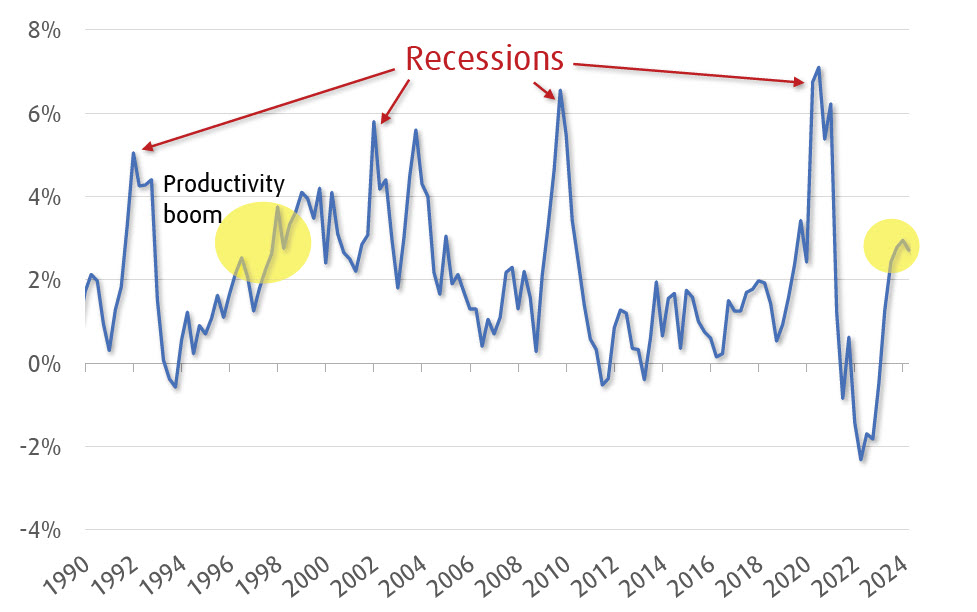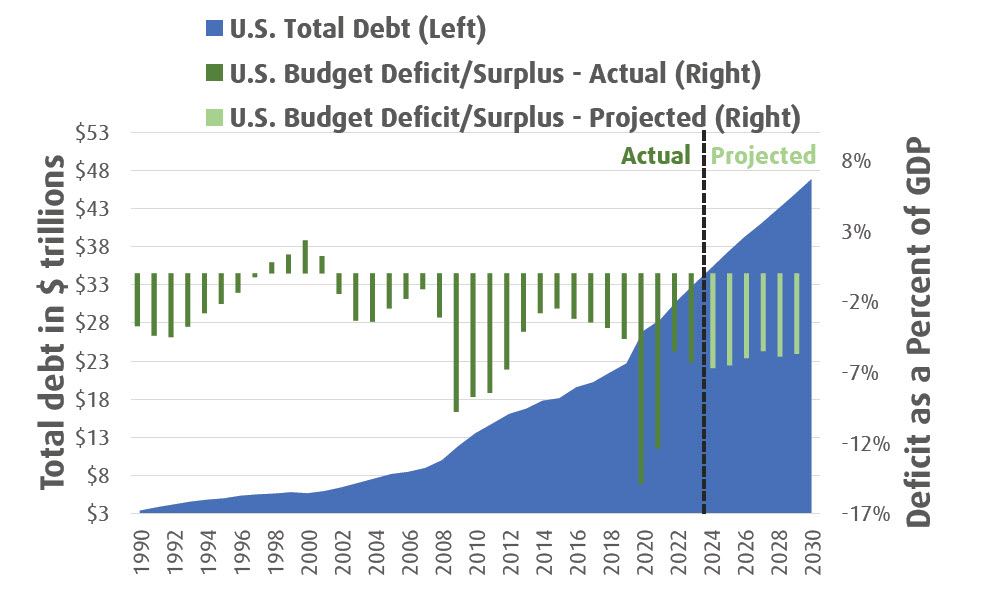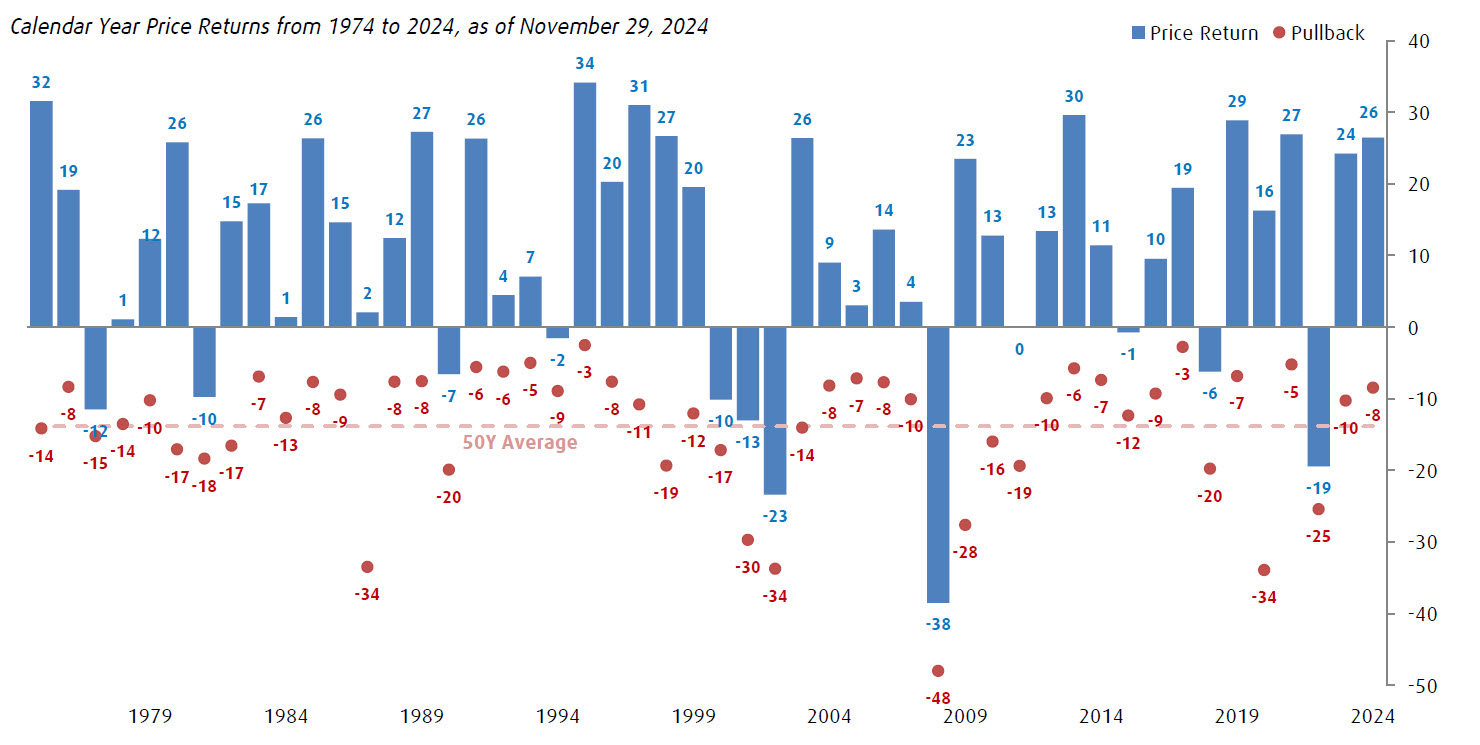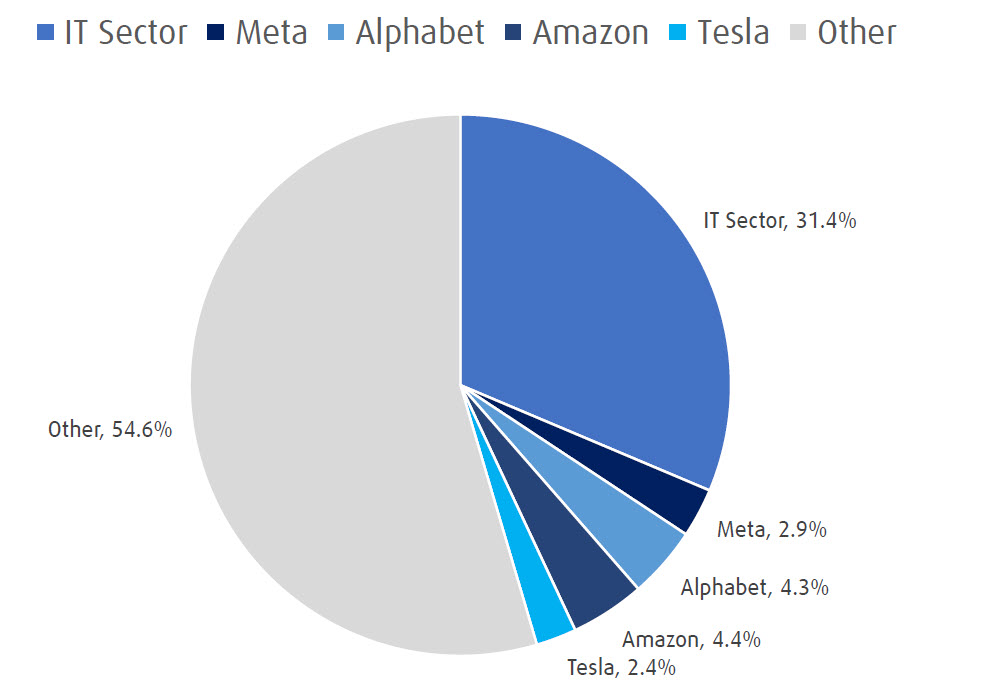Looking for something else?
Welcome
BMO Family Office
BMO Delaware Trust Company
BMO Investment Services
*Services offered though BMO Private Bank, BMO Family Office and/or BMO Delaware Trust Company
Looking for something else?
†Service offered through BMO Investment Services
†Service offered through BMO Investment Services
Make sure you’ve spelled everything correctly, or try searching for something else
BMO Family Office
BMO Delaware Trust Company
BMO Investment Services
Looking for something else?
Financial markets are always subject to crosscurrents. In both 2023 and 2024, despite high interest rates, our expectation of an economic soft landing and favorable equity market was driven by a continued healthy labor market, falling inflation, and a Fed pivot to rate cutting.

“Rarely are opportunities presented to you in a perfect way . . . Opportunities --
the good ones -- are messy, confusing and hard to recognize . . . they challenge you.”
— Susan Wojcicki, former CEO of YouTube
Financial markets are always subject to crosscurrents. In both 2023 and 2024, despite high interest rates, our expectation of an economic soft landing and favorable equity market was driven by a continued healthy labor market, falling inflation, and a Fed pivot to rate cutting. These positive underpinnings were sufficient in 2024 as the fear of recession still featured prominently. In 2025, however, expectations are higher, policy shifts are underway, and several new factors are primed to collide; these include tariffs, trade wars, budget deficits, long-term interest rates, and stock market valuation.
On the positive side, U.S. consumers and corporations remain fundamentally sound with modest leverage and ample spending ability. While the Fed may only deliver a few additional rate cuts in 2025, this stance still represents a tailwind and market support. As we evaluate the mix of likely crosscurrents in 2025, the dominant force that we see driving the economy and markets – the name of the game – is productivity.
Productivity and AI
Productivity gains come from companies producing more goods and services without a proportionate increase in inputs, particularly labor. This achievement facilitates profit margin growth, promotes disinflation, and also allows for healthy wage gains . . . which then feed back into consumer and corporate spending. Labor productivity typically spikes higher during recessions amid mass layoffs, but the recent rise in productivity associated with a new technology is reminiscent of the technology-driven lift seen in the mid-1990s that lasted multiple years (Exhibit 1).
Exhibit 1 » Nonfarm Business Labor Productivity (QoQ, 4-quarter MA)

Source:U.S. Bureau of Labor Statistics (2024), BMO Wealth Management (2024) - As of September 30, 2024
Anecdotes of fruitful “use cases” for AI have piled up in company announcements over the past several months. As we move through 2025, we expect to see those compelling anecdotes morph into bottom line benefits for companies, not through mass layoffs but rather through growth with fewer additions to labor. The current consensus of analyst expectations for S&P 500 earnings growth in 2025 is well into double digits1, and we expect productivity gains to be an important driver of this profitability.
Inherent policy tensions and other risks
The crosscurrents in 2025 include a mix of policy stances in a state of tension. Pro-growth but with fiscal restraint. Tariffs (“the most beautiful word in the dictionary”2) but with dealmaking to bring back manufacturing jobs. More corporate tax cuts but only for companies that produce here at home. Cheap energy but attractive enough price levels for energy companies to invest in new supply. In broad terms, our expectation is that Trump 2.0 will be much more about trade policy than tax cuts, primarily because the fiscal deficit projections going forward are already straining at over 6% of GDP as debt levels rise exponentially (Exhibit 2).
Exhibit 2 » U.S. Federal Debt and Deficits

Source: Federal Reserve (2024), U.S. Department of Treasury (2024), Congressional Budget Office (2024), BMO Wealth Management (2024); CBO projections as of June 2024; Debt/deficit data current through Q1 2024
Pre-inauguration, the financial markets have settled on the notion that President-elect Trump will elevate deal-making above all, and that economically damaging trade wars are unlikely. This is certainly a possibility, but achieving better trade deals may hinge on credible tariff threats that are sometimes put into practice. We expect these heightened tensions to result in more typical (i.e., greater) market volatility in 2025 relative to that experienced in the past two years (Exhibit 3).
Exhibit 3» S&P 500 Returns & Intra-Year Pullbacks

Source: Bloomberg L.P. (2024), Standard & Poor’s (2024), BMO Wealth Management (2024)
Annual returns are based on calendar years and includes price only and does not include dividends. Intra-year pullback refers to the largest peak to trough market decline within a calendar year For general information only. Market conditions and trends will vary. Data does not reflect actual investment performance but reflects benchmark results of the underlying indices referenced above. You cannot invest directly in an index.
Other potential risks in 2025 include the tail-risk possibility of sharply rising longer-term interest rates. In October 2023, the 10-year Treasury yield rose to 5% and led to a stock market pullback based on liquidity concerns and a higher discount rate for companies’ future earnings. Since this event, markets may have become more resilient to this particular level, but if factors such as sticky inflation and expanding fiscal deficits drive the 10-year Treasury yield past 5.5%, we would expect another pullback in stock prices. That tail risk aside, our fair value level for the 10-year Treasury yield rests in the mid-4% range.
Valuation and the psychology of a bubble
Recent concerns have been raised around AI or even the stock market as a whole as being in a bubble. We disagree with this label, and the mix of exuberance and complacency associated with a bubble are not currently present. Even the seemingly high stock market valuation requires an important caveat because the weight of the IT Sector plus other megacap tech-related companies has swollen to over 45% of the S&P 500 (Exhibit 4). Compared with the Nasdaq’s actual bubble almost 25 years ago, today’s forward price-to-earnings ratio of the IT sector is about 40% lower.
Exhibit 4» S&P 500 Capitalization

Source: Bloomberg L.P. (2024), BMO Wealth Management (2024); As of December 10, 20204
Outlook and positioning
Consumer and corporate fundamentals are sound, which combined with a few additional Fed rate cuts should support spending and economic growth. These healthy fundamentals, we believe, are now “priced in” to the market after another year of strong equity returns. The stock market’s post-election enthusiasm may soon collide with contentious trade negotiations and the reality of budget discussions that bump against extreme fiscal deficits. If higher prices and disrupted supply chains ensue, the patience of consumers, companies, and financial markets may be tested in 2025.
It is with eyes wide open that we enter 2025 with a favorable lean into U.S. equities. Within international markets, we maintain a small underweight overall that is concentrated on lower European exposure and is partially offset by above benchmark exposure to Japan where structural reforms should provide a multi-year tailwind.
In 2025, we expect higher stock market volatility and a greater propensity for headline risk and pullbacks. Productivity, profits, and underlying economic health should prevent either a sustained bear market or recession. U.S. equity returns are likely to track earnings growth in the low-double-digit range, while investment grade bonds reduce portfolio risk and are likely to provide mid-single-digit returns. We also continue to lean into thematic investments with favorable trends such as U.S. infrastructure and reinsurance. New opportunities may also come along but, fitting of the times, they may be messy and not presented in a perfect way.
_____________________________________________________________
1 Standard and Poor’s as of 12/10/2024
2 President-elect Trump at the Economic Club of Chicago on 10/15/2024.

Chief Investment Officer BMO Wealth Management - U.S.

